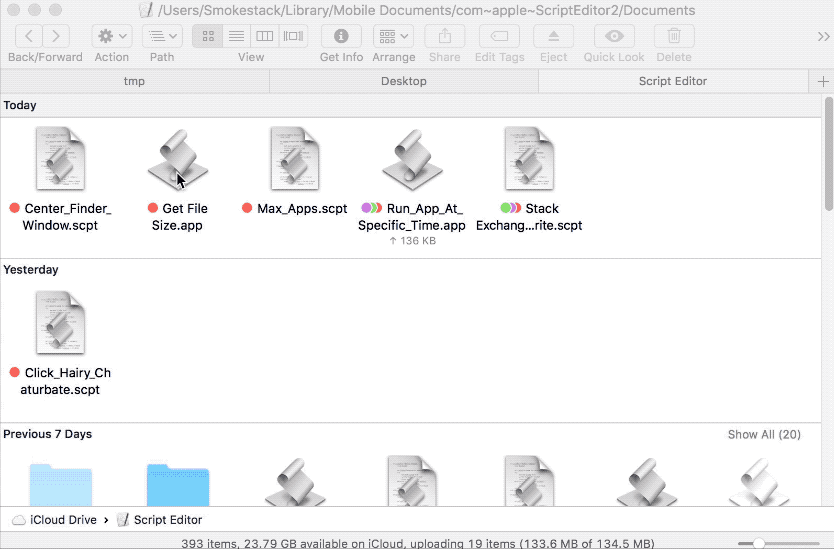Ecco una soluzione alternativa che potrebbe funzionare per te.
Salva questo codice seguente in ScriptEditor.app, come applicazione. Quindi in Finder.app, mentre tieni premuto il tasto comando, trascina l'applicazione di editor di script appena salvata nella barra degli strumenti del Finder. Ora ogni volta che hai selezionato un file in Finder, fai clic su .app che hai appena spostato sulla barra degli strumenti e visualizzerà una finestra di dialogo con le dimensioni del file attualmente selezionato.
tell application "Finder"
try
set fileSize to size of item 1 of (get selection)
on error errMsg number errNum
activate
display alert ¬
"Selected File Info" message ¬
"There Is No Selected File In Finder" buttons {"OK"} ¬
default button ¬
"OK" giving up after 4
return
end try
end tell
copy fileSize as string to fileSize2
set tempList to text items of fileSize2 as string
set tempList to tempList as inches as text -- Workaround For Displaying Large Numbers Correctly
try
set kiloBytes to ((items -4 thru 1) of tempList & "." & (items -1 thru -3) of tempList)
set theMessage to "The File Size Is " & kiloBytes & " Kilobytes"
on error errMsg number errNum
set theMessage to "The File Size Is " & fileSize & " Bytes"
end try
activate
display alert ¬
"Selected File Info" message theMessage ¬
buttons {"OK"} ¬
default button ¬
"OK" giving up after 4


